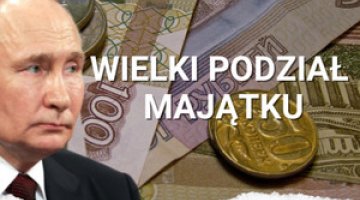The financial prospects for the Russian arms programme
In recent weeks, a discussion has been taking place in Russia on the prospects for financing a large-scale weapons programme, which in turn forms part of the wider debate on what form the Russian Federation’s budget will take if a new wave of economic crisis hits the country. The starting point for the discussion was the initial proposal of a three-year budget for the years 2013-2015 which the Russian Ministry of Finance presented on 18 July.It is intended to increase defence spending as much as possible: by 25.8% in 2013, and by a further 18.2% in 2014, reaching a total of US$91 billion. In 2015, it should only rise by the rate of inflation. The proposal to boost Russian military spending – which has already been rising steadily for over a decade – was overshadowed in the following weeks by information concerning problems with implementing the ten-year State Armaments Programme [Russian abbr. GPV 2020], which began in 2011, and the need to transfer some of the funds reserved for it to the period after 2015. According to the Russian account, spending on GPV 2020 has been identified with defence spending as a whole, and is being promoted as a preview of a reduction in Russian military spending. The final shape of the military spending plan is still unknown (Russia's budget for 2013-2015 is expected to reach parliament in October), mainly due to a clash of interests – between the Ministries of Finance and Defence on one hand, and the military and industrial complex [Russian abbr. OPK] on the other. The importance of the problem was emphasised during the Russian Federation Security Council’s meeting on 31 August, when President Vladimir Putin openly sided with the two government departments, delegating policy-pricing in the armaments industry – the main subject of the dispute – to the direct control of Prime Minister Dmitri Medvedev. Contrary to most previous comments, it is impossible to reduce military spending in Russia. When taking all the possible restrictions into account, it should rise by at least 30% to 2014, which even at high inflation would mean real growth. Past experience also shows that the Russian government will do everything to continue its weapons programme, even in the event of a deterioration in the financial state of the Russian Federation – and even at the expense of the country’s accumulated financial reserves.
The place of the arms programme in Russia’s military spending
Russia's military expenditures are not a single, compact item of the budget. The vast majority of funds are included in the budget’s ‘National Defence’ section (see Appendix); they are a key source of funding for the RF’s Ministry of Defence. Military expenditures are listed as separate items in other sections of the budget (with the exception of the ‘Security and Maintenance of Law & Order’ section, which covers the financing of the other ‘ministries of force’), as well as in the form of grants and subsidies. It is hard to determine precisely the level of military spending, because the budget bill includes so-called ‘targeted federal programmes’ (the biggest of which is GPV 2020); these are financed from various budget items and from extra-budgetary funds. As a result, the Ministry of Defence’s budget exceeds the total spending in the ‘National Defence’ section by about 10 percent each year.
Over the last decade, expenditures from the ‘National Defence’ section have nominally increased five-fold – but in real terms they have increased by ten or more percent a year, and the upward trend has not even been slowed by the financial crisis. A March 2009 amendment adapting the budget to crisis conditions resulted in a real increase in military spending of about US$1 billion. The Ministry of Defence’s budget has grown in similar proportions, closing 2011 at the level of US$71.9 billion. Only the United States and China spend more on their militaries.
Nevertheless, the current level of military spending is still insufficient to fully implement the GPV 2020 programme. This is valued at US$770 billion, around 90% of which is to be paid for by the Ministry of Defence (the remaining funds have been allocated to the technical modernisation of military formations which are subordinate to the other ‘ministries of force’). This means that in the period 2011-2020, the Ministry of Defence would have to spend an average of $70 billion per year on technical modernisation alone. The Russian government’s desire to achieve this level of spending is determined by the importance of the GPV 2020 programme: not only is it the undisputed priority of Russia's defence policy, but it is also seen as a mechanism of socio-economic development (through investment in cutting-edge industries, and by increasing demand for highly skilled labour). This is another reason why the programme is also being funded from outside the ‘National Defence’ section of the budget. So far, around 30-40% of the expenditure on GPV 2020 has been allocated from this section, but over the next few years this percentage should rise steadily, exceeding 70% in the second half of the decade. This would require the Ministry of Defence’s budget to be maintained at US$100 billion per year (current expenditure should be estimated at about US$30 billion). From the estimates presented in July, it seems that such spending levels – if Russia can avoid the worst effects of a possible second wave of the crisis – would be reached in the middle of the decade (the Ministry of Defence would receive about US$90 billion from the ‘National Defence’ section, plus the remaining 10% from other budget items).
The issue of GPV 2020’s financial security has acquired special importance in the light of the spending cuts planned by the Russian Ministry of Finance in order to maintain a relatively balanced budget in crisis conditions. While the timetable for implementing the programme remains flexible, no reduction in the amount dedicated to carrying it out has so far been considered. If there is a long-term collapse in the market prices of fuels (one lasting at least several months, for example), and thus a drop in budget revenues, the implementation of GPV 2020 (as well as other priority spending) could be indirectly and temporarily financed from reserve funds and currency-denominated reserves (which could total over US$510 billion). So in the current situation, the problem is not a question of where to get the money from, but when, how and on what to spend it.
Financing the weapons programme – the dispute’s subject and antagonists
Since work started on the GPV 2020 programme, the sums of money allocated to it have been a bone of contention between their main recipient, the Armed Forces of the Russian Federation; the Ministry of Defence; and the producers within the OPK. The parties have frequently been unable to agree on the price of the product; the military has accused the arms industry of overstating it. The increasing demands of the RF’s Armed Forces have also contributed to the dispute. Whereas over the previous decade the Russian army used the full range of products offered by the OPK, now within the GPV 2020 programme they are only interested in the latest generation of weapons and military equipment, almost completely abandoning the purchase of Soviet-era equipment. For a large part of the Russian defence industry, this has meant additional costs (primarily investments in new technologies and infrastructure), which it has tried to pass on to its customers. The Russian army has in effect dropped the services of some producers (including such renowned companies as IzhMash, producers of small-arms weapons, and the armour specialists UralMashZavod), until they can present new and more attractive products.
The differences between the Ministry of Defence and the OPK have negatively affected the implementation of GPV 2020, and highlighted the differences in potential among the various branches of the Russian defence industry. The programme’s objectives in the technical modernisation of the Air Force, Strategic Missile Troops and Space Forces (new equipment such as aeroplanes and helicopters is being delivered on time and in ever greater quantities) are proceeding without any major problems. The Land Forces and the Airborne Troops (Russian abbr. VDV) are in by far the worst situation; they have mainly ordered modernisation packages for weapons they already have, and the OPK is not supposed to launch the production of a new generation of tanks and armoured combat vehicles before the middle of the decade. However, the symbol of the problems with delays in the modernisation process is the Navy. The dispute over the prices and outfitting of the ships has its roots in the army’s procrastination over acquiring three new nuclear submarines (the prototype intercontinental ballistic missile carrier, the Yury Dolgoruky, has now been waiting to enter service for well over a year; in the meantime, the construction of further units has begun). However, delays within the programme as a whole have been small: in 2011, only 15% of the contracts were not completed, and this year the figure will be about 5%.
The dispute between the Ministry of Defence and the OPK gained a new dimension in spring this year, when the Ministry of Finance started work on a new budget. The military, who could not use all the funds allotted them for GPV 2020, agreed to a proposal for a possible transfer of up to 20% of the expenditure planned for the years 2013-2015 to the second half of the decade. They could then start shopping for a new generation of tanks, armoured combat vehicles and aircraft, as well as new destroyers for the Navy. The Ministry of Defence also treated co-operation with the Ministry of Finance as another way of putting pressure on the OPK, after the symbolic defeat the latter suffered when setting the prices for nuclear submarines (the government acceded to the manufacturer’s demands). Strong opposition to limiting the planned purchases (although their scale should anyway be greater than in previous years) came from the OPK’s boards of directors, with the support of Dmitri Rogozin, the deputy prime minister responsible for military industry. A compromise may be achieved thanks to the modernisation programme which the OPK is currently drawing up; an amount of US$100 billion would be spent on upgrading the defence industry by 2020. The money saved by the possible shift in military purchasing to the period after 2015 (US$6-7 billion annually in 2013-2015) would be used to reform the OPK. The question of whether the funds transferred from the GPV 2020 programme would automatically be deducted from the ‘National Defence’ section of the budget remains open. But even in this case, Russian military spending should increase by more than 30% in the next two years (see Appendix).
Conclusion
The dispute over the price and quality of weapons and military equipment between the OPK and the Ministry of Defence has contributed to the slow implementation of the GPV 2020 programme’s objectives. However in the vast majority of cases (about 90% of orders from the years 2011-2012), the technical modernisation of the Russian Federation’s Armed Forces has been carried out without major problems, and the amount of investment guarantees that it will be completed.
The budget’s savings plans do not cover military spending, which will continue to grow in subsequent years; the only unresolved question is the scale of the growth. If the Russian Ministry of Finance’s proposal from July are adhered to, this will result in an increase in the Ministry of Defence’s budget to US$100 billion in 2014-2015, a sum which should be considered sufficient to enable the full implementation of the GPV 2020’s objectives.
Appendix
Expenditure in the ‘National Defence’ section of the Russian Federation’s state budget in the period 2008-2012 (in bold), with budget forecasts for successive three-year periods (in billions of roubles: US$1 = about 30 roubles)
|
|
2008 |
2009 |
2010 |
2011 |
2012 |
2013 |
2014 |
2015 |
|
2008 |
1 040.9 |
1376.5 |
1379.5 |
1476.7 |
|
|
|
|
|
2009 |
|
1 211.9 |
1 253.2 |
b.d. |
b.d. |
|
|
|
|
2010 |
|
1276.8 |
1 517.1 |
1 655.7 |
2 098.6 |
|
|
|
|
2011 |
|
|
|
1 532.8 |
1 847.4 |
2 334.3 |
2 750.8 |
|
|
2012 |
|
|
|
|
1 864.5 |
2 345.7 |
2 771.6 |
2 864.7 |
|
2012* |
|
|
|
|
1 864.5 |
2 145.7 |
2 520.3 |
2 616.0 |
* Predicted spending from the ‘National Defence’ section of the Russian Federation’s state budget, after subtracting the GPV 2020 expenditure and moving it to the period after 2015 (in the amounts proposed by the Ministry of Finance).





